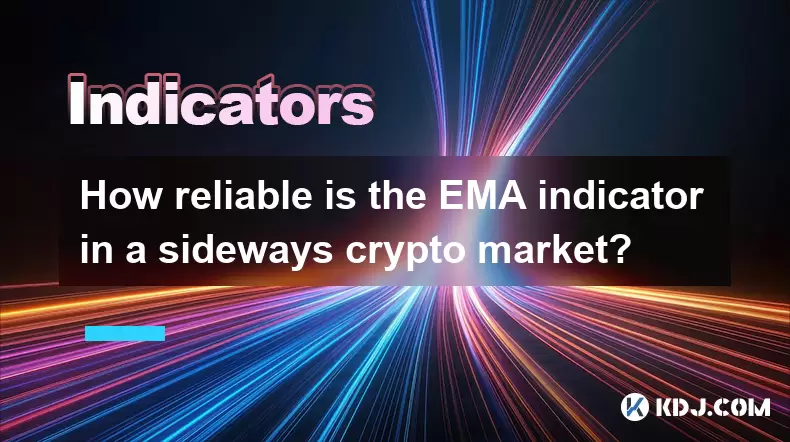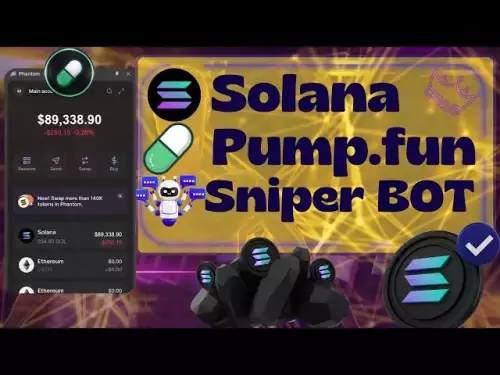-
 Bitcoin
Bitcoin $115100
-1.30% -
 Ethereum
Ethereum $4758
-1.70% -
 XRP
XRP $3.027
-2.19% -
 Tether USDt
Tether USDt $0.9998
-0.01% -
 BNB
BNB $883.2
-1.42% -
 Solana
Solana $204.0
2.62% -
 USDC
USDC $1.000
0.02% -
 Dogecoin
Dogecoin $0.2371
-0.97% -
 TRON
TRON $0.3612
-1.24% -
 Cardano
Cardano $0.9128
-2.19% -
 Chainlink
Chainlink $26.13
-3.93% -
 Hyperliquid
Hyperliquid $44.73
0.90% -
 Sui
Sui $3.715
-0.56% -
 Stellar
Stellar $0.4153
-2.41% -
 Ethena USDe
Ethena USDe $1.000
-0.04% -
 Bitcoin Cash
Bitcoin Cash $588.9
-2.06% -
 Avalanche
Avalanche $25.91
3.27% -
 Hedera
Hedera $0.2525
-1.45% -
 Litecoin
Litecoin $120.9
-1.35% -
 UNUS SED LEO
UNUS SED LEO $9.607
0.30% -
 Toncoin
Toncoin $3.382
-0.31% -
 Shiba Inu
Shiba Inu $0.00001329
-0.38% -
 Uniswap
Uniswap $11.38
-1.67% -
 Polkadot
Polkadot $4.222
2.83% -
 Aave
Aave $354.5
4.93% -
 Dai
Dai $0.0000
0.00% -
 Bitget Token
Bitget Token $4.704
-1.49% -
 Cronos
Cronos $0.1565
1.83% -
 Ethena
Ethena $0.7463
1.55% -
 Monero
Monero $265.8
-0.39%
How reliable is the EMA indicator in a sideways crypto market?
In sideways crypto markets, EMA signals can be unreliable due to whipsaws; combine them with support/resistance levels and RSI for better accuracy.
Aug 13, 2025 at 11:36 am

Understanding the EMA Indicator in Cryptocurrency Trading
The Exponential Moving Average (EMA) is a widely used technical analysis tool in the cryptocurrency market. Unlike the Simple Moving Average (SMA), which assigns equal weight to all data points, the EMA gives greater weight to recent price data, making it more responsive to new information. This responsiveness is one of the reasons traders favor the EMA, especially in fast-moving markets like crypto. The formula for EMA involves a smoothing factor that emphasizes the most recent closing prices, allowing it to react more quickly to price changes.
When applied to crypto charts, the EMA helps identify trends by smoothing out price fluctuations. Common periods used include the 9-day, 20-day, and 50-day EMAs, with shorter periods being more sensitive. In trending markets—either bullish or bearish—the EMA often performs well by providing timely signals for entries and exits. However, its reliability diminishes when market conditions shift, particularly in sideways or ranging markets where prices lack a clear directional bias.
Characteristics of a Sideways Crypto Market
A sideways or range-bound market occurs when the price of a cryptocurrency fluctuates within a defined upper and lower boundary without establishing a consistent upward or downward trend. In such environments, support and resistance levels become more significant than trend-following indicators. Price action tends to oscillate between these levels, often driven by market indecision, low volatility, or consolidation after a strong trend.
In these conditions, trend-based tools like the EMA may generate frequent false signals. For example, as the price bounces between support and resistance, the EMA lines may cross repeatedly, suggesting buy or sell opportunities that quickly reverse. This phenomenon is known as whipsaw, and it can lead to multiple losing trades if traders rely solely on EMA crossovers. The core issue is that the EMA is designed to follow trends, not to interpret lateral price movement.
EMA Behavior During Range-Bound Conditions
During a sideways market, the EMA tends to flatten and move horizontally, reflecting the lack of directional momentum. When multiple EMAs—such as the 9-day and 21-day—are plotted together, they often converge and move in parallel, losing their usual hierarchical separation seen in trending markets. This convergence reduces the reliability of crossover signals, which are commonly used to trigger trades.
For instance, consider a scenario where Bitcoin is trading between $60,000 and $64,000 for several days. The 9-day EMA might cross above the 21-day EMA near the top of the range, prompting a long position. However, the price could immediately reverse and drop back toward support, turning the trade unprofitable. The same pattern may repeat at the bottom of the range, with a bearish crossover leading to a short that reverses upward. These repeated false breakouts highlight the EMA’s limitations in non-trending environments.
Improving EMA Accuracy in Sideways Markets
To enhance the reliability of the EMA in a sideways market, traders often combine it with other technical tools. One effective method is to use horizontal support and resistance levels as filters. Only EMA signals that align with key price zones should be considered. For example, a bullish EMA crossover near a well-established support level may carry more weight than one occurring in the middle of the range.
Another approach is to integrate oscillators such as the Relative Strength Index (RSI) or Stochastic RSI. These indicators help identify overbought and oversold conditions within the range. A buy signal from an EMA crossover could be validated if the RSI is below 30, indicating potential undervaluation. Conversely, a sell signal might be more credible if the RSI is above 70.
Additionally, adjusting the EMA period can reduce noise. Using a longer EMA, such as the 50-day instead of the 9-day, can smooth out short-term fluctuations and minimize false signals. Alternatively, some traders use EMA ribbons, which involve plotting multiple EMAs simultaneously to assess the degree of alignment. In a sideways market, tightly clustered EMAs suggest consolidation, signaling traders to avoid trend-based strategies.
Step-by-Step Guide to Using EMA in a Range-Bound Crypto Market
- Open your preferred cryptocurrency trading platform, such as TradingView or Binance.
- Select the asset you wish to analyze and set the chart to a timeframe suitable for range detection, such as the 4-hour or daily chart.
- Apply the 9-day and 21-day EMA indicators to the chart by navigating to the indicators menu and searching for “EMA.”
- Draw horizontal lines at recent swing highs and swing lows to define the support and resistance boundaries.
- Observe how the EMAs interact with these levels—note whether crossovers occur near the edges of the range.
- Add the RSI (14-period) to the chart to assess momentum and confirm overbought (>70) or oversold (<30) conditions.
- Wait for an EMA crossover (e.g., 9-day crossing above 21-day) that occurs near support and coincides with an RSI reading below 30 before considering a long position.
- For short entries, look for a bearish crossover near resistance with RSI above 70.
- Set stop-loss orders just outside the range boundary to manage risk.
- Avoid trading EMA signals that occur in the middle of the range or when the EMAs are flat and tightly grouped.
Alternative Indicators for Sideways Markets
While the EMA has limitations in range-bound conditions, other tools are better suited for such environments. The Bollinger Bands indicator, which consists of a moving average and two volatility bands, excels in identifying overextensions within a range. Price touching the upper band may signal a reversal downward, especially when combined with bearish candlestick patterns.
The Average Directional Index (ADX) can also help determine whether a market is trending or not. An ADX value below 25 typically indicates a weak or absent trend, suggesting that range-bound strategies should be used instead of trend-following ones like EMA crossovers. Pairing ADX with EMA allows traders to filter out low-momentum environments where EMA signals are less reliable.
Another useful tool is the Volume Profile, which shows where the majority of trading activity has occurred. In a sideways market, high-volume nodes often act as strong support or resistance levels, providing better entry and exit points than EMA-based signals.
Frequently Asked Questions
Can the EMA still be used during consolidation phases?
Yes, but with caution. The EMA can help identify the overall market structure, but traders should avoid acting on crossovers unless they align with key support/resistance levels or are confirmed by momentum indicators like RSI.
What EMA periods work best in a sideways market?
Longer periods such as the 50-day or 100-day EMA tend to be more stable and less prone to whipsaw. Shorter EMAs like the 9-day are too sensitive and generate excessive noise in range-bound conditions.
How can I tell if a market is sideways and not starting a new trend?
Look for price movement confined within parallel horizontal lines over several periods. Use the ADX indicator—values below 25 suggest a lack of trend. Also, observe volume patterns; low volume during price swings often confirms consolidation.
Should I completely ignore EMA signals in a flat market?
Not necessarily. While standalone EMA crossovers are unreliable, they can still offer context when combined with price action analysis and volume confirmation. Use them as part of a broader strategy rather than a primary signal generator.
Disclaimer:info@kdj.com
The information provided is not trading advice. kdj.com does not assume any responsibility for any investments made based on the information provided in this article. Cryptocurrencies are highly volatile and it is highly recommended that you invest with caution after thorough research!
If you believe that the content used on this website infringes your copyright, please contact us immediately (info@kdj.com) and we will delete it promptly.
- Crypto, Pepe, and Investment: Navigating the Meme Coin Mania in 2025
- 2025-08-24 06:45:29
- Crypto Market Recovery: Unearthing ROI Gems in 2025
- 2025-08-24 05:25:35
- Aave, World Liberty, and Token Allocation: Decoding the DeFi Buzz
- 2025-08-24 05:25:35
- Crypto Presales & Exchange Launches: What's Hot Now?
- 2025-08-24 05:45:17
- Meme Coin Mania: Experts Rank Layer Brett as the Top Contender
- 2025-08-24 05:45:18
- Sui Price Prediction: Will the Breakout Move Stick?
- 2025-08-24 06:05:29
Related knowledge

What does it mean when the +DI and -DI cross frequently in the DMI indicator but the ADX is flattening?
Aug 11,2025 at 03:15am
Understanding the DMI Indicator ComponentsThe Directional Movement Index (DMI) is a technical analysis tool composed of three lines: the +DI (Positive...

What does the sudden appearance of a "dark cloud cover" candlestick pattern during an uptrend indicate?
Aug 13,2025 at 11:35am
Understanding the 'Dark Cloud Cover' Candlestick PatternThe dark cloud cover is a bearish reversal pattern in technical analysis that typically appear...

What does it mean when the moving average, MACD, and RSI all send buy signals simultaneously?
Aug 11,2025 at 01:42pm
Understanding the Convergence of Technical IndicatorsWhen the moving average, MACD, and RSI all generate buy signals at the same time, traders interpr...

What does it mean when both the KDJ indicator and the RSI show overbought signals simultaneously?
Aug 13,2025 at 11:35am
Understanding the KDJ Indicator in Cryptocurrency TradingThe KDJ indicator is a momentum oscillator derived from the Stochastic Oscillator, widely use...

What does it mean when the price is trading above the SAR indicator but the red dots are densely packed?
Aug 09,2025 at 11:49pm
Understanding the SAR Indicator and Its Visual SignalsThe SAR (Parabolic Stop and Reverse) indicator is a technical analysis tool used primarily to de...

What does it mean when the candlestick chart forms a "Morning Star" but trading volume is sluggish?
Aug 12,2025 at 06:28pm
Understanding the Morning Star Candlestick PatternThe Morning Star is a three-candle bullish reversal pattern commonly observed in cryptocurrency pric...

What does it mean when the +DI and -DI cross frequently in the DMI indicator but the ADX is flattening?
Aug 11,2025 at 03:15am
Understanding the DMI Indicator ComponentsThe Directional Movement Index (DMI) is a technical analysis tool composed of three lines: the +DI (Positive...

What does the sudden appearance of a "dark cloud cover" candlestick pattern during an uptrend indicate?
Aug 13,2025 at 11:35am
Understanding the 'Dark Cloud Cover' Candlestick PatternThe dark cloud cover is a bearish reversal pattern in technical analysis that typically appear...

What does it mean when the moving average, MACD, and RSI all send buy signals simultaneously?
Aug 11,2025 at 01:42pm
Understanding the Convergence of Technical IndicatorsWhen the moving average, MACD, and RSI all generate buy signals at the same time, traders interpr...

What does it mean when both the KDJ indicator and the RSI show overbought signals simultaneously?
Aug 13,2025 at 11:35am
Understanding the KDJ Indicator in Cryptocurrency TradingThe KDJ indicator is a momentum oscillator derived from the Stochastic Oscillator, widely use...

What does it mean when the price is trading above the SAR indicator but the red dots are densely packed?
Aug 09,2025 at 11:49pm
Understanding the SAR Indicator and Its Visual SignalsThe SAR (Parabolic Stop and Reverse) indicator is a technical analysis tool used primarily to de...

What does it mean when the candlestick chart forms a "Morning Star" but trading volume is sluggish?
Aug 12,2025 at 06:28pm
Understanding the Morning Star Candlestick PatternThe Morning Star is a three-candle bullish reversal pattern commonly observed in cryptocurrency pric...
See all articles

























































































